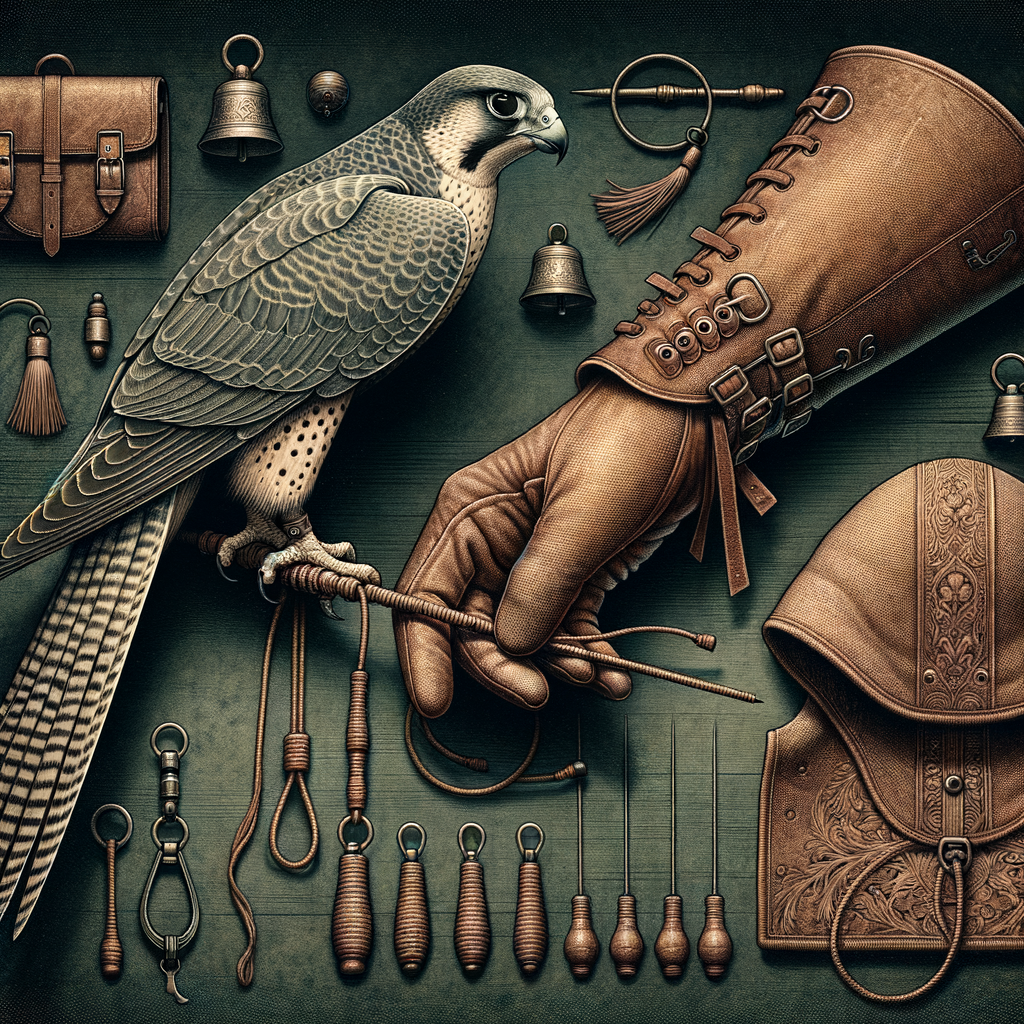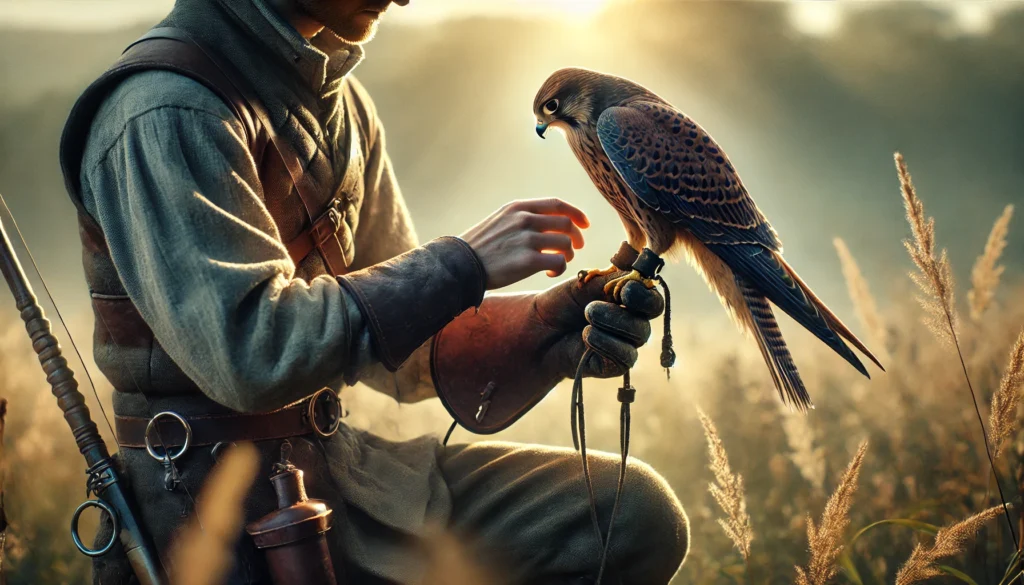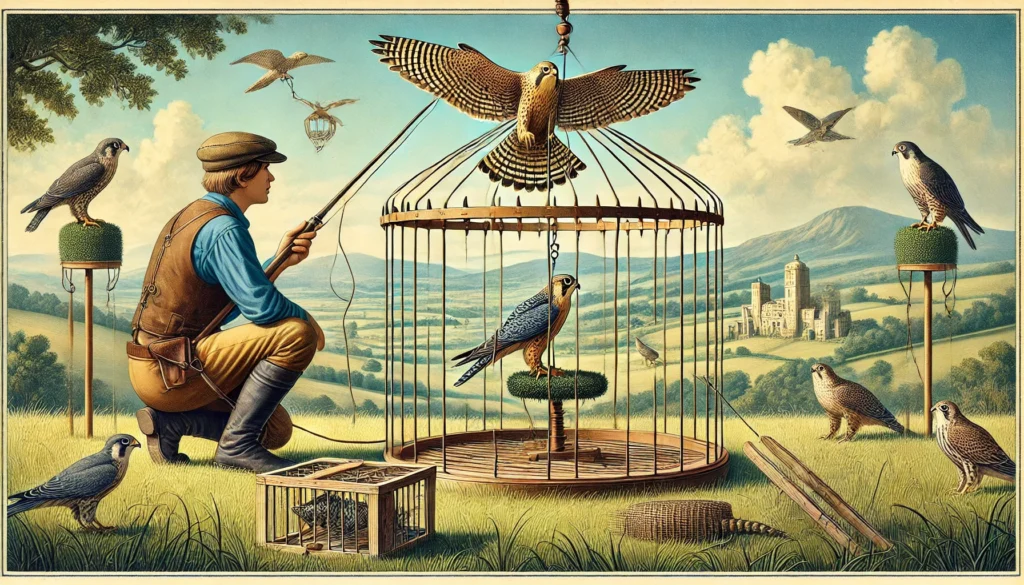Falconry, the ancient art of hunting with trained birds of prey, requires specialized equipment to ensure both the falconer’s and the bird’s safety and success. Whether you’re just starting out or considering taking up this fascinating hobby, understanding the basic falconry equipment is crucial. In this guide, we’ll introduce you to the essential gear every novice falconer needs to begin their journey into this captivating world.
Here are the key takeaway points:
- Essential falconry equipment includes gloves, scales, jesses, leashes, perches, hoods, bells, mews, and hunting vests
- The cost of basic falconry equipment ranges from approximately $1,582 to $3,925
- High-quality falconry equipment can be purchased from specialized online suppliers and stores
- Professional falconry gear differs from beginner gear in quality, durability, functionality, customization, and cost
Spread Your Wings: Discover the Essential Gear for Your Falconry Journey
Hey there, fellow bird enthusiast! Ever dreamed of having a magnificent raptor perched on your arm, ready to take flight at your command? Well, you’re in for a treat! We’re about to dive into the thrilling world of falconry and explore the must-have equipment that’ll set you on the path to becoming a modern-day falconer.
Picture this: You’re standing in a field, the wind rustling through your hair, with a majestic hawk eagerly awaiting your signal. But before you can experience that heart-pounding moment, you need to gear up! Don’t worry, though – we’ve got your back.
In this article, we’ll break down the basic falconry equipment you’ll need to get started. From specially-designed gloves that’ll protect your hands from razor-sharp talons to the nifty little bells that’ll help you keep track of your feathered friend, we’ll cover it all. Trust us, you won’t want to miss a single detail – each piece of gear plays a crucial role in ensuring both you and your bird stay safe and happy.
So, whether you’re a curious newcomer or a nature lover looking to spread your wings into a new hobby, stick around! We’re about to embark on an exciting journey that’ll bring you one step closer to the ancient art of falconry. Let’s get ready to soar!
Basic Falconry Equipment: Getting Started
Falconry is an ancient art that requires specific equipment to ensure the safety and well-being of both the falconer and the bird. Let’s explore the essential gear you’ll need to start your falconry journey.
What Basic Equipment Do I Need to Start Falconry?
To begin your falconry adventure, you’ll need the following essential items:
- Glove: A thick, sturdy glove to protect your hand when handling your bird.
- Jesses: Leather straps attached to the bird’s legs for control.
- Leash: A longer strap connected to the jesses for tethering.
- Hood: Used to cover the bird’s eyes, keeping it calm during transport.
- Lure: A training tool used to recall your bird.
- Perch: A comfortable resting spot for your falcon.
- Mews: A specialized housing area for your bird.
- Telemetry equipment: Helps track your bird during free flights.
For more detailed information on falconry gear, check out our falconry equipment guide.
How Much Does Basic Falconry Equipment Cost?
The cost of basic falconry equipment can vary widely, but you can expect to spend anywhere from $500 to $2,000 for a starter kit. Here’s a rough breakdown:
- Glove: $50-$150
- Jesses and leash: $30-$80
- Hood: $50-$200
- Lure: $20-$50
- Perch: $100-$300
- Telemetry equipment: $300-$1,000
Remember, investing in quality equipment is crucial for the safety and well-being of your bird.
Where to Buy Quality Falconry Equipment?
You can purchase falconry equipment from specialized retailers, both online and in-person. Some reliable sources include:
- Falconry supply websites
- Local falconry clubs and organizations
- Falconry equipment suppliers at falconry meets and events
- Custom equipment makers
For a list of reputable suppliers, visit our falconry equipment suppliers page.
What’s the Difference Between Beginner and Professional Falconry Gear?
While the basic equipment remains similar, professional falconry gear often differs in quality, durability, and sophistication:
- Material quality: Professional gear uses higher-grade materials for increased durability.
- Customization: Advanced falconers often use custom-fitted equipment.
- Telemetry: Professional-grade tracking systems offer longer range and better accuracy.
- Specialized tools: Professionals may use additional equipment for specific hunting or training techniques.
As you progress in your falconry journey, you may want to upgrade your equipment. Learn more about advanced gear in our advanced falconry techniques guide.
Remember, falconry is a regulated activity in many countries. Before purchasing equipment, ensure you understand the legal aspects of falconry and obtain the necessary permits.
Starting your falconry journey with the right equipment is crucial. As you gain experience, you’ll develop preferences for specific gear and techniques. Always prioritize the safety and well-being of your bird when selecting and using falconry equipment.
Embarking on your falconry journey requires careful preparation and the right equipment. From the essential glove and lure to the crucial telemetry system, each piece of gear plays a vital role in your success and your bird’s well-being. Remember, quality matters – investing in proper equipment ensures safety and enhances your falconry experience.
As you gather your kit, keep in mind that falconry is more than just collecting gear. It’s about building a partnership with your raptor, honing your skills, and embracing a time-honored tradition. With the right tools and a passion for the art, you’re well on your way to mastering this ancient sport.
Ready to take flight? Your falconry adventure awaits!



